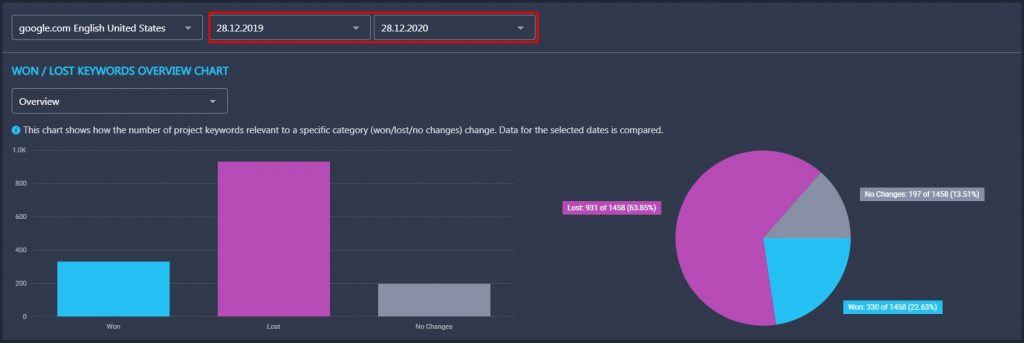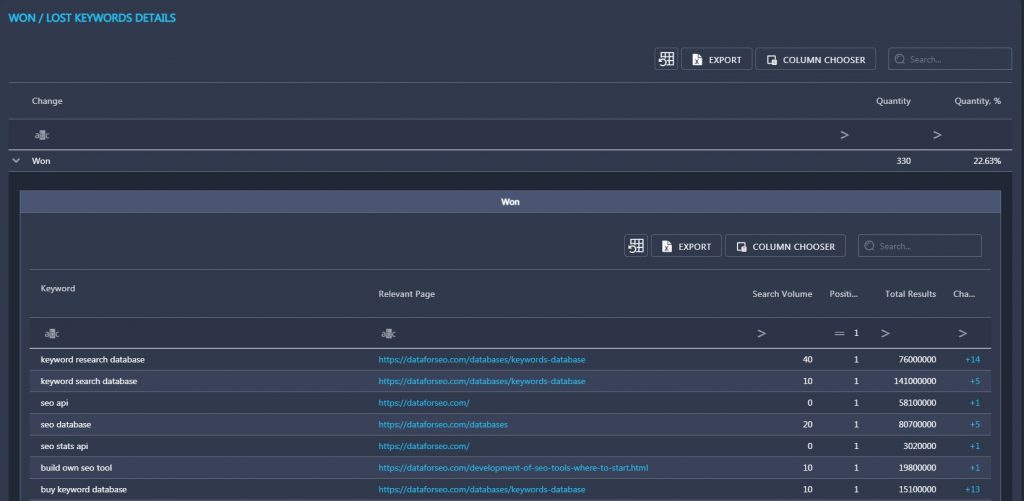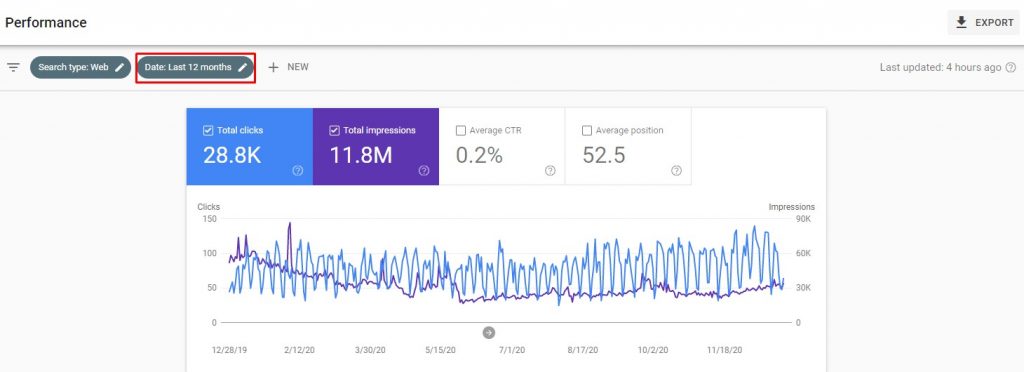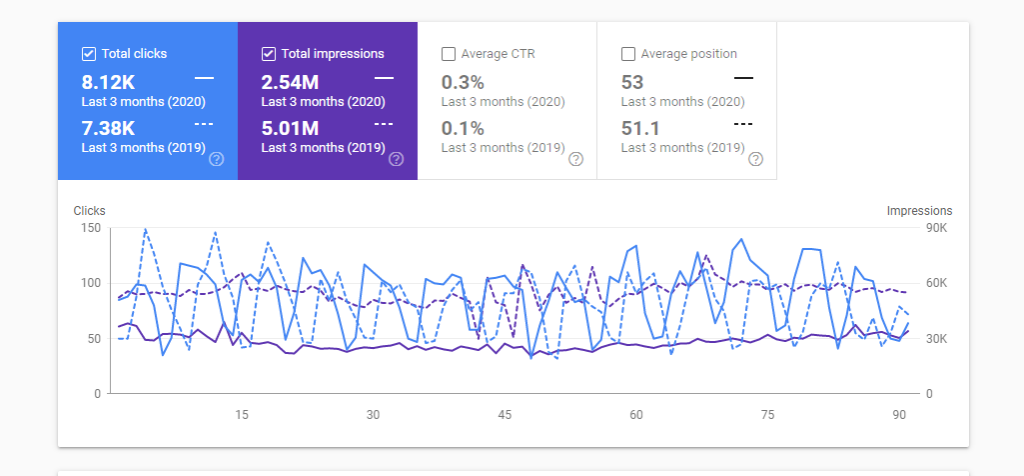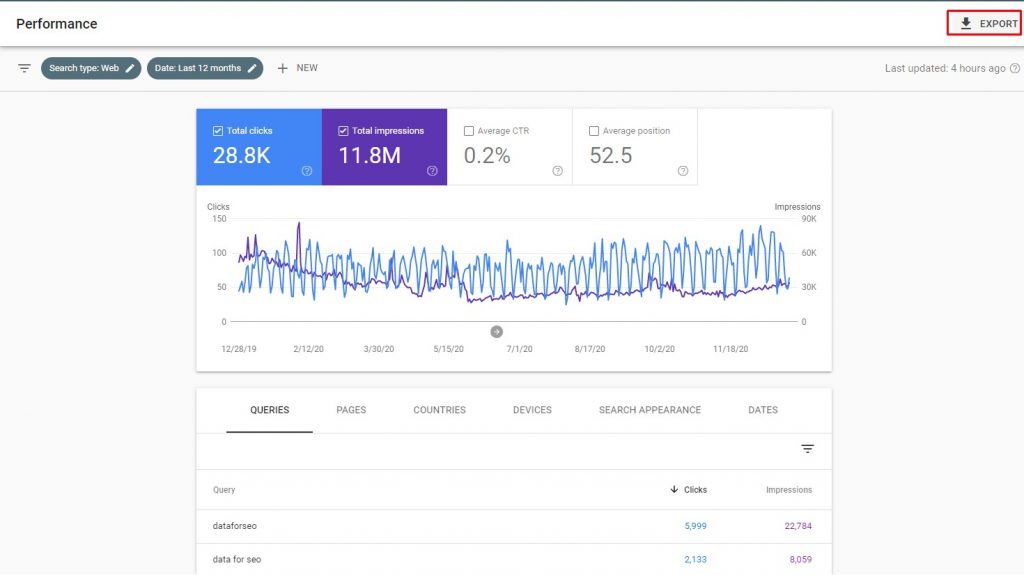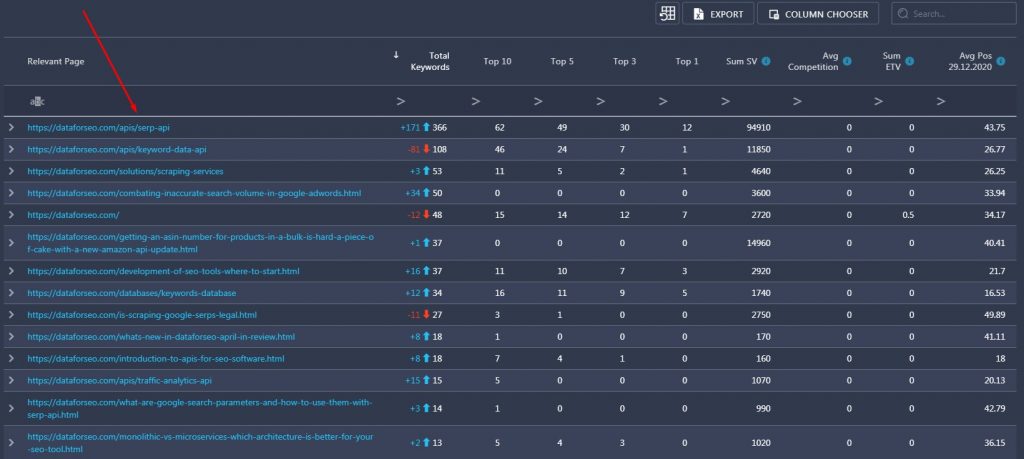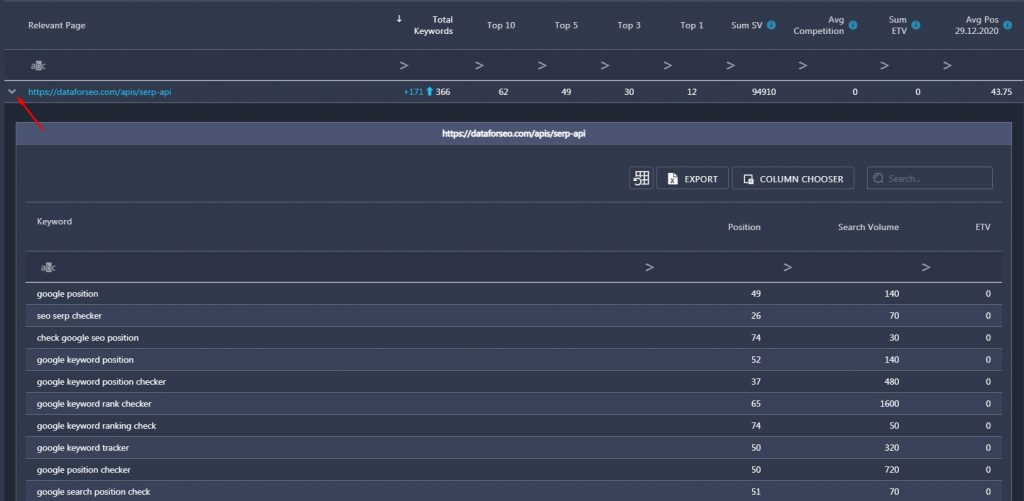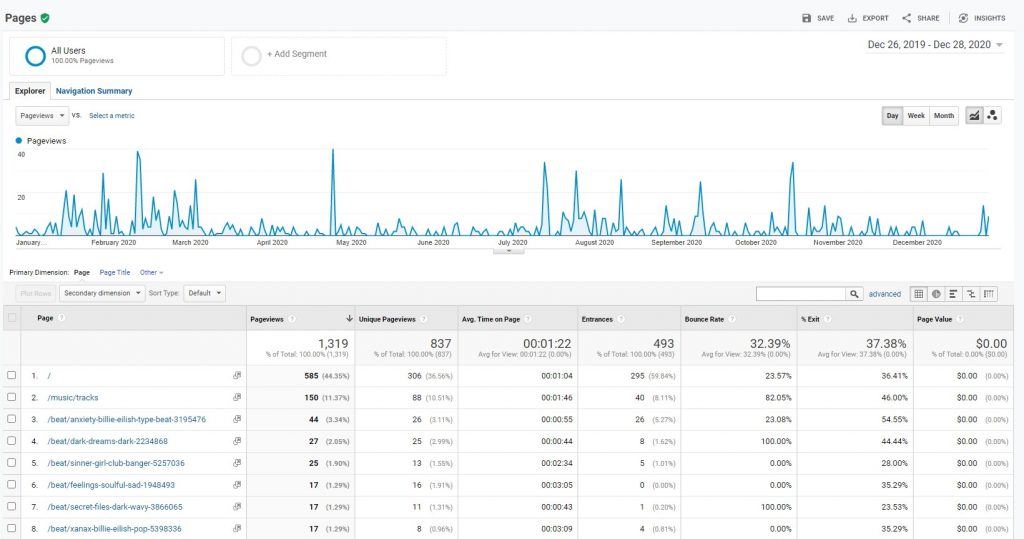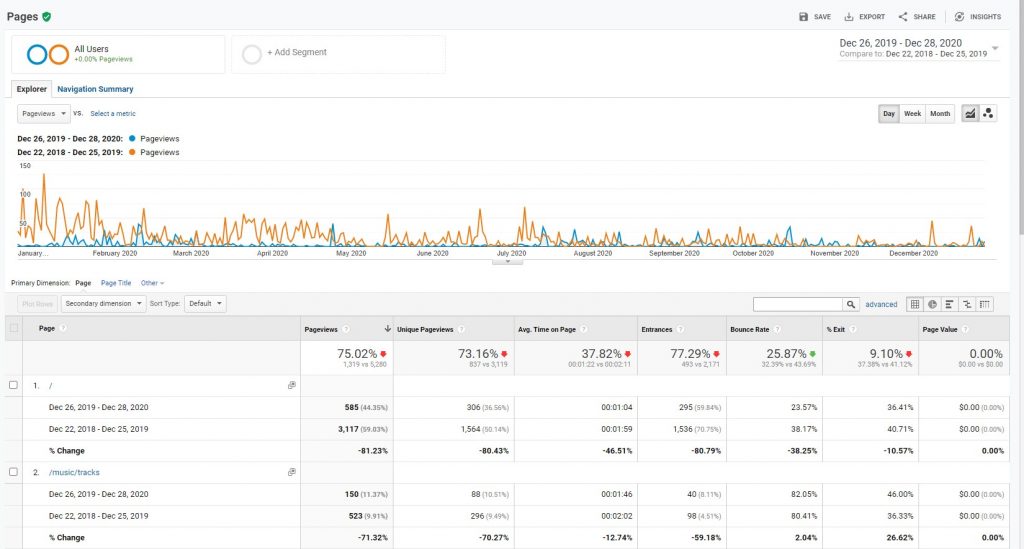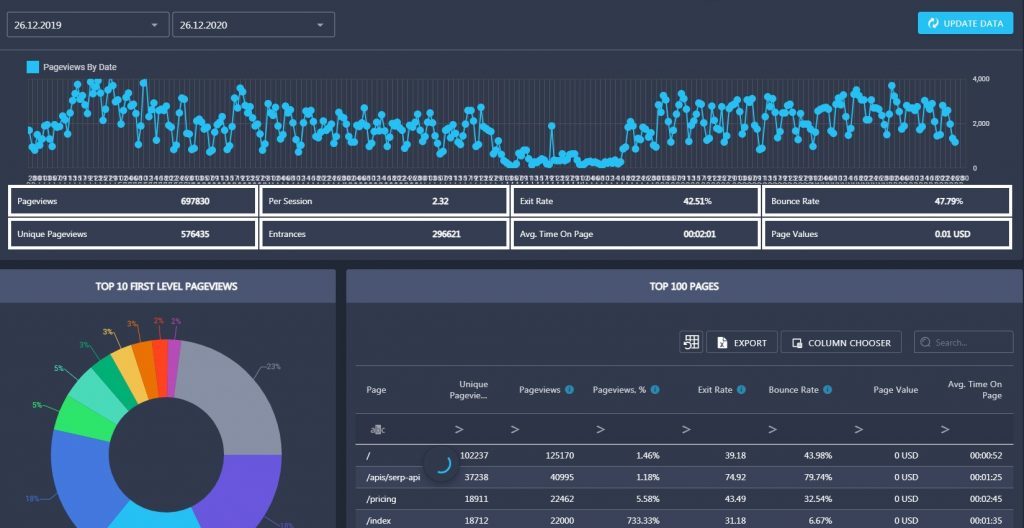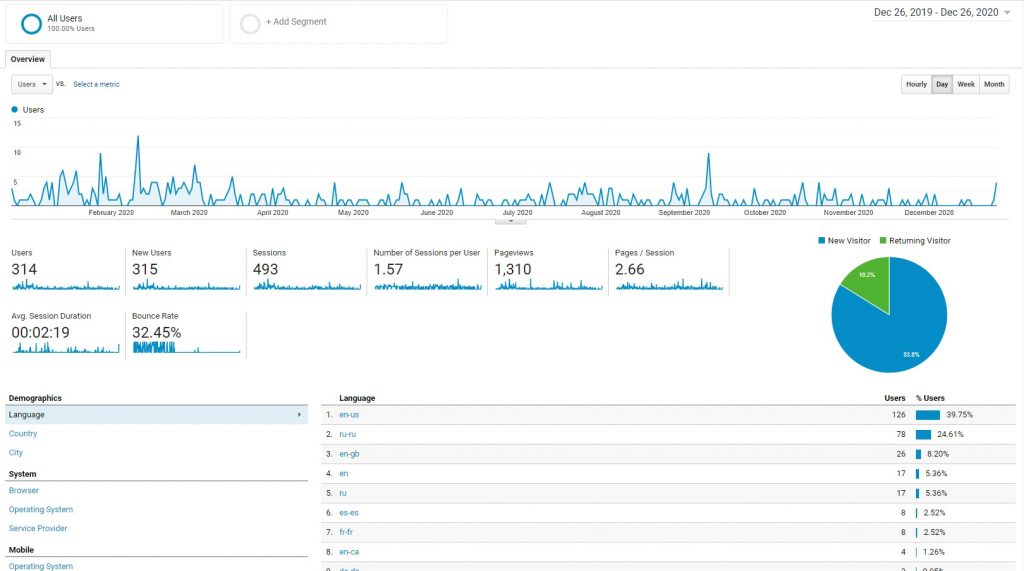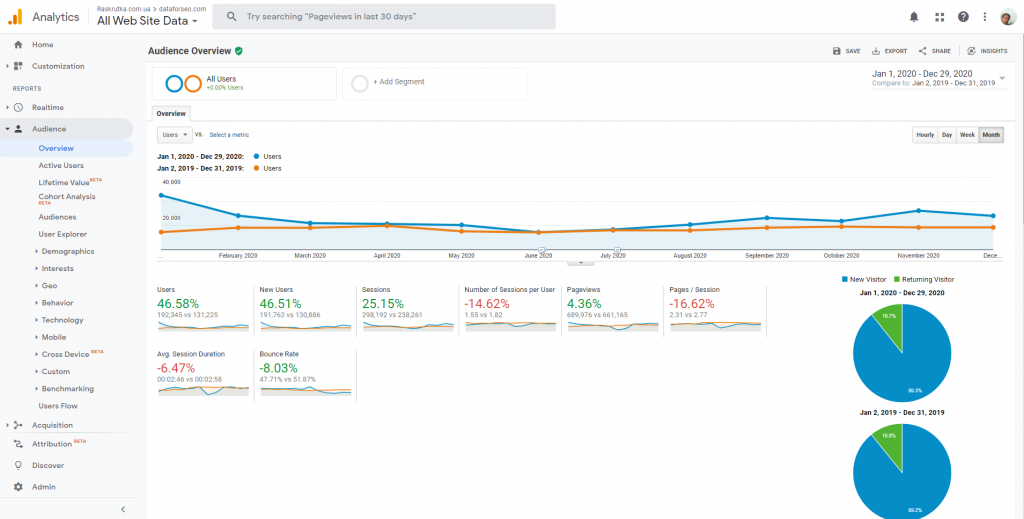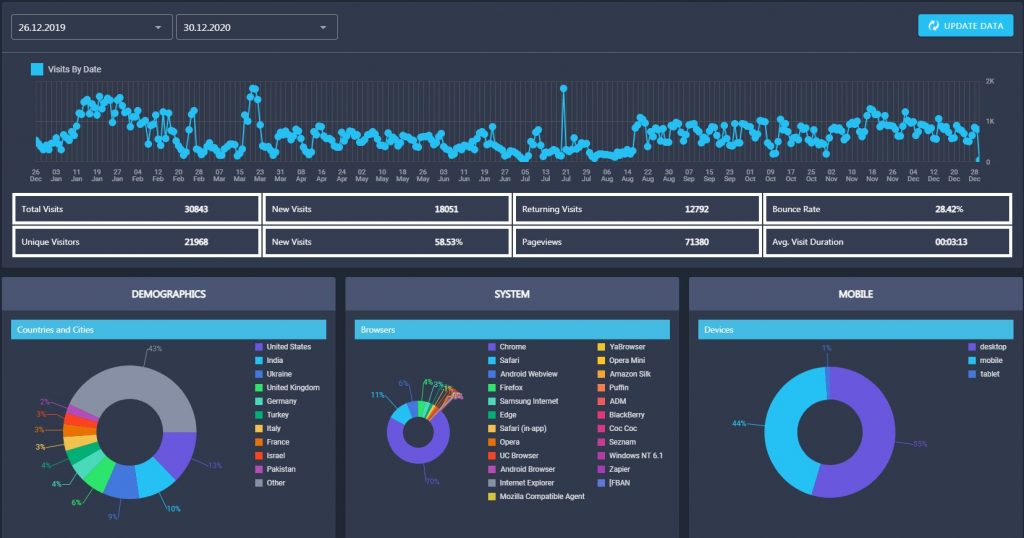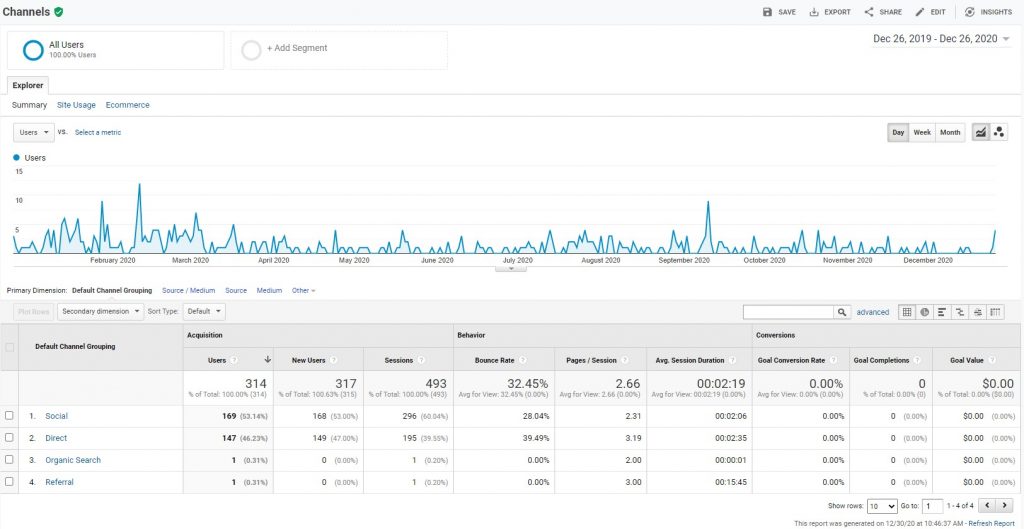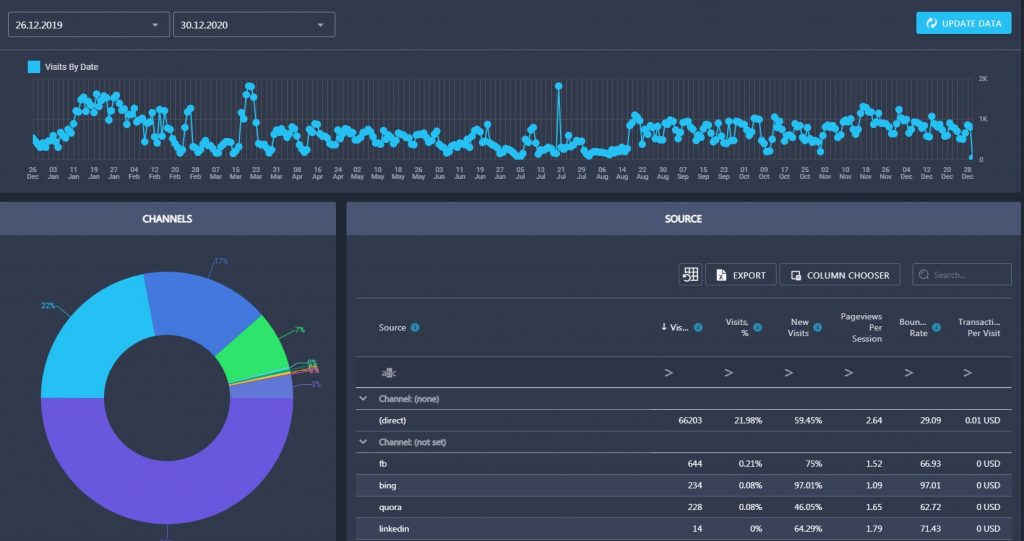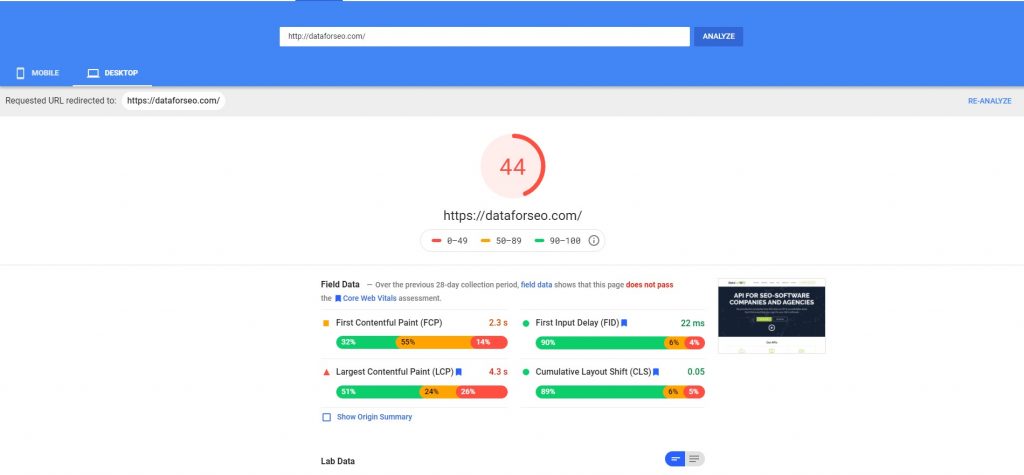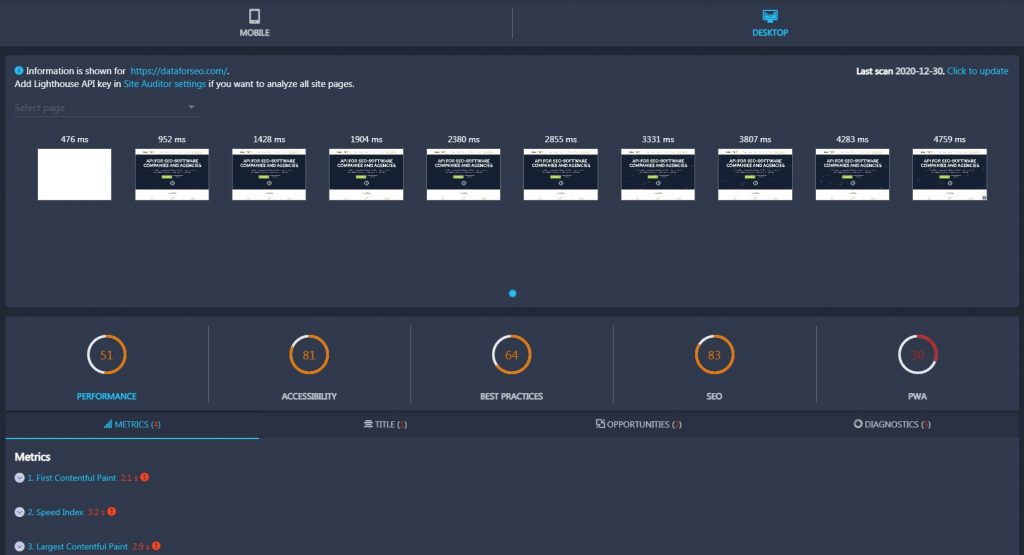7-Step Checklist for Your Year-End SEO Audit
30 December 2020 Leave a comment ALL-HANDS SEO
2020 is almost over, so it’s time to summarize your optimization efforts by running a year-end SEO audit.
Not sure what to include in it? Then follow our simple seven-step checklist.
What to include in an SEO audit
Let’s discuss it in more detail.
#1 Won and lost keywords
By finding won and lost keywords, you’ll be able to evaluate your website’s overall visibility. This data can tell you whether your SEO strategies were bearing fruits or damaging your optimization efforts.
You can find your website’s keyword data in Search Console. This tool will provide you with CTR, impressions, the number of clicks, current positions, and other metrics. But unfortunately, Google Search Console won’t show you won and lost keywords. It can only display average positions for your target search queries, which is not enough for comprehensive analysis. That’s why it’s a good idea to use advanced SEO tools like RankActive’s Rank Tracker.
Using our tool’s win/lost feature, you’ll quickly discover how many keywords have won and lost rankings throughout the year.
Our tool will also display relevant pages, search volumes, current positions, and ranking changes for all target terms. These metrics will help you determine which keywords are worth focusing on in 2021.
You can then export this data in an xlsx file and add it to your SEO audit.
#2 Website’s year performance
There are a few performance indicators that can tell you if your SEO was successful in 2020. We’re talking about clicks, impressions, average CTR, and average keyword position. This data is available in the Performance tab of Google Search Console. All you have to do is filter it by last 12 months.
Then compare these numbers to the ones of 2019 to see whether your results have improved. Click on Date, go to Compare, and select the desired period.
All the data will be compared automatically.
Search Console’s Performance report will also provide you with top-performing pages and queries along with the info on countries, devices, search appearance, and dates. You’ll find this data below the main graph.
You can then export information from the report in pdf, Google sheets. xlsx, or CSV format and include it in your audit.
If you don’t have access to Search Console, you can still discover your top-performing pages and keywords with our Rank Tracker tool. This data is available in the Ranked pages section.
The tool will provide a full list of ranking pages and a total number of keywords they’re ranking for, along with their search volumes and ETVs. You can discover the ranking terms for a particular page by clicking on the arrow near the desired URL.
Then, once again, you can export all the data in an excel file. You will need it to run an SEO audit later.
#3 Content analytics
By analyzing different content metrics, you’ll find out how users interacted with your content throughout 2020.
Content-related data is stored in Google Analytics. Sign in to your account, go to Behavior > Site Content > All pages, and then specify the date range.
Google Analytics will display pageviews, unique pageviews, average time on page, entrances, bounce rate, exit rate, and page value metrics:
- The pageviews metric represents the total number of times your visitors viewed an individual page. The higher this number is, the better as it usually correlates with website traffic.
- Unique pageviews indicates the number of views generated by users during single sessions. If a user revisits the page during one session, Google Analytics doesn’t count it as a unique page view.
- Avg. time on page shows the average amount of time all users spend on a single page. Higher average times is a good thing as it often means visitors find your content engaging and helpful.
- The entrances metric represents the number of users who began their session with a particular page. Homepages are usually the ones that have the most number of entrances.
- Bounce rate is the percentage of single-page visits to a particular page. Even though the bounce rate is not a ranking factor, it’s better to keep it low because a high bounce rate may indicate a bad user experience and/or poor content.
- The exit rate metric shows the percentage of visitors who ended their session on a specific page. This is a crucial indicator for e-commerce websites because it helps webmasters discover the weakest parts of their sales funnels.
- Page value is also crucial for e-commerce websites. This metric shows which pages users view before completing a goal (making a transaction, submitting a contact form, etc.). That way, webmasters can get a sense of what exactly encouraged their visitors to complete goals.
You can compare all of these metrics to the previous year to see what’s changed. To do that, click on a date, tick the compare to option, specify the previous date range, and click Apply.
After that, export this data and include it in your year-end audit.
You can also integrate Google Analytics into RankActive’s Website Analytics tool so that you will have several useful SEO tools in one place. Many of our customers find the Website Analytics tool more intuitive and easier to navigate than Google Analytics itself, so don’t hesitate to try it out.
#4 Audience analytics
Audience analysis is one of the most important parts of your year-end audit. By analyzing where your visitors come from, what devices they use, what browsers they prefer, and other data, you’ll be able to create more relevant content for your audience and improve UX on your website. This info can also help you run better PPC campaigns as you will know whom to target in your ads.
Your audience data can be accessed in Google Analytics. You will find it in the Overview section of the Audience tab.
The overview chart will provide you with info on users, new users, sessions, number of sessions per user, pageviews, pages per session, avg. session duration, and bounce rate. Since you already know what most of these metrics mean, we’ll explain only the ones that may be unclear:
- Number of sessions per user displays a distribution of the average number of sessions for all users per day for a specified time frame. The higher this number, the better because it may mean users enjoy your content and revisit your website to hear more from you.
- The pages per session metric represents the number of pages users usually visit during single sessions. If this number is high, that may mean your website is engaging, and visitors are willing to explore it.
In the overview section, you’ll also find info on your audience demographics and the systems they use. By clicking on any tab, you’ll get more detailed information.
You can also compare the data from the overview chart to the previous year.
Once you set the Overview chart right, export the data and use it for creating an SEO audit later.
Or, again, you can use our Website Analytics tool. All the data from Google Analytics is also available there.
What makes our tool different is that we provide the audience data on one page, so you don’t have to switch between several pages like in Google Analytics.
#5 Traffic sources
It’s also important to include information about your website’s traffic sources. This data will help you understand which traffic channels work best in your case so that you can focus on them more in 2021.
You can find information on the total number of visits and traffic sources in Google Analytics. Go to Acquisition > All Traffic > Channels and then specify the date range.
Google Analytics will show you how many users visit your website from social media, direct links, organic search, and referral links. You can get more details by clicking on the desired traffic channel. For example, you can click on Social and discover which social media brings you the most traffic.
If you don’t like how Google Analytics reports look, you can always use RankActive’s Website Analytics. All the crucial info from Google’s tool will be there.
#6 Website performance on mobile and desktop devices
High website performance is a must for a good user experience. If your website pages load for too long, most of your visitors will bounce back to search results. Moreover, Google plans to roll out Core Web Vitals and Mobile-first indexing updates, so website performance on mobile devices will have been a huge ranking factor by 2021. That’s why you should analyze several performance metrics and add them to your SEO audit.
To check your website’s performance both on mobile and desktop, use Google PageSpeed Insights. Type the URL into the corresponding field and click analyze.
Give the tool a few seconds to analyze your website. It will score your site based on several performance indicators.
You can switch between mobile and desktop results by clicking the buttons in the upper left corner.
You can also measure your website’s performance with RankActive’s Site Auditor tool. In the Lighthouse section, you will find every metric from PageSpeed Insights.
Moreover, our tool will provide you with useful tips on improving website performance, so you will know what to focus on in the upcoming year.
Unfortunately, you can’t export data from either Google PageSpeed Insights or RankActive’s Lighthouse. You can only include it in your SEO audit manually.
#7 The number of backlinks
Backlinks is one of Google’s ranking factors. The more high-quality backlinks from authoritative sources your website has, the better for its rankings.
It’s important to export backlinks data from Search Console regularly. That will enable you to compare your current reports with the previous ones to discover whether your website gains backlinks or loses them.
Your website’s backlinks data is stored in the Links tab of Search Console. This tool will also show you the number of external links along with the top linked pages. You can export this data by clicking on the Export external links button and selecting the desired format (CSV or Google Sheets). After that, you can include it in your year-end SEO audit.
Conclusion
When it comes to website optimization, it’s better to avoid guesswork and rely on real data instead. That’s exactly what you need SEO audits for. They can help you discover the vulnerable parts of your website so that you can fix them to rank higher.
We recommend running audits regularly as it will enable you to compare your optimization results to the previous periods and see whether you’re winning or losing. Doing it is easier when you have all the tools needed for that in one place, so sign up to RankActive and use our products for 14 days for free.
Tags: Audits, Google Analytics, Lighthouse, rank active, Rank Tracker, Search Console, SEO, SEO audits, Website, website analytics
Like this article? There’s more where that came from.
- 5 Questions to Ask Yourself Before Paying for Rank Tracking Software
- 5 Serious Mistakes Beginner SEOs Make and How to Fix Them
- Why We Use Google’s New Link Attributes and You Should Too
- Title and Description in 2021: Why Google Rewrites SEOs’ Meta Tags
- What We Should Learn From Google’s “About This Result” Feature


